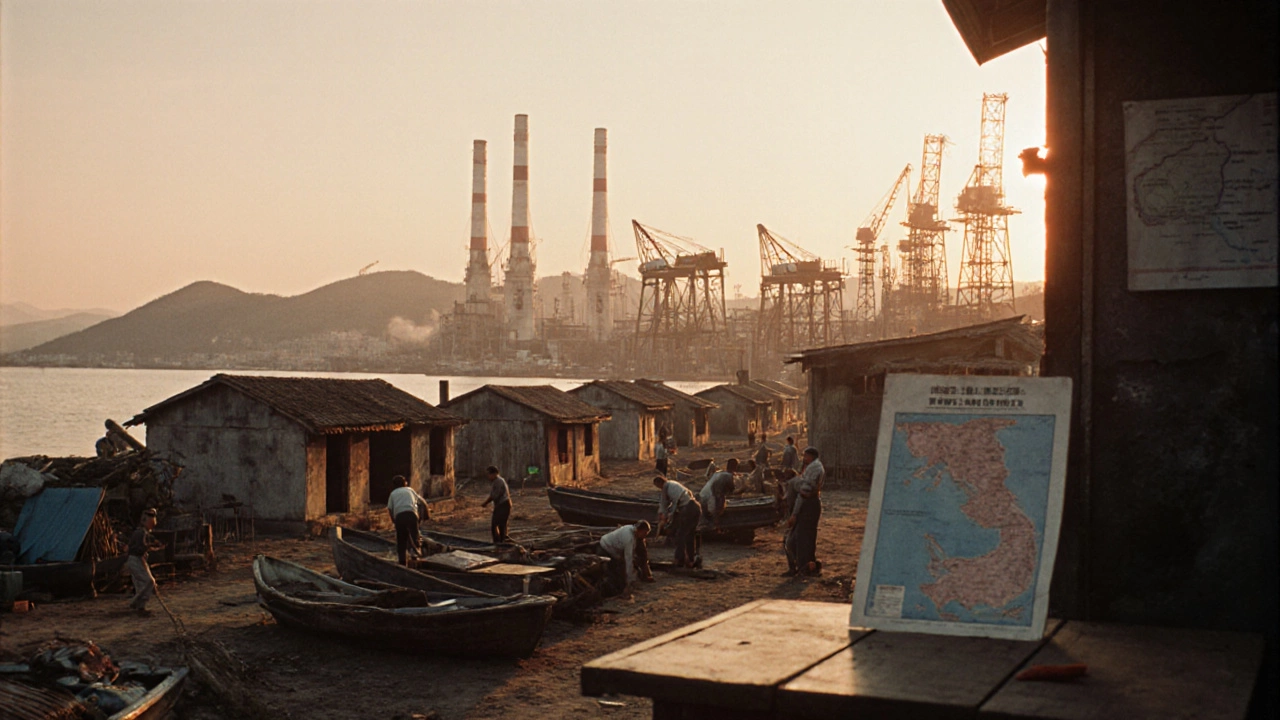- Pittsburgh: The Steel Making Capital of the US – History, Facts & Impact Jul 14, 2025
- Discovering India's Strongest Wood for Durable Furniture Mar 23, 2025
- Most Popular Small Business in Manufacturing: What's Leading the Pack? Mar 16, 2025
- How Manufacturing Shapes Our Lives: Insights from Government Schemes Apr 7, 2025
- The Truth About Zero Waste Countries: Can Any Nation Claim Zero Landfills? Jul 3, 2025
Global Manufacturing Hubs: Where Production Power Gathers
When examining global manufacturing hubs, geographic regions where large‑scale production, logistics, and talent concentrate to drive economic growth. Also known as industrial clusters, these areas depend heavily on supply chain networks, the interconnected pathways for raw materials, components, and finished goods and leverage advanced manufacturing technology, automation, AI, and smart factories that boost efficiency to stay competitive.
Global manufacturing hubs encompass industrial clusters that share infrastructure, workforce, and policy support. They rely on supply chain networks to move inputs quickly and deliver outputs worldwide. Advanced manufacturing technology drives the competitiveness of these hubs, cutting costs and shortening time‑to‑market.
Key Factors Shaping Global Manufacturing Hubs
First, location matters. Proximity to ports, rail links, and major highways reduces logistics costs. Regions like the Pearl River Delta in China, the Midwest in the United States, and Germany’s Ruhr area illustrate how geography fuels cluster growth. Second, talent pools keep the engine humming. Universities, technical schools, and vocational training centers supply engineers, technicians, and managers who can operate high‑tech equipment.
Third, policy incentives create a friendly business climate. Tax breaks, streamlined permitting, and subsidies for green tech attract investors. For example, India’s Production‑Linked Incentive (PLI) scheme aims to turn existing plants into export‑oriented industry leaders, while the European Union funds carbon‑neutral factories across its core hubs.
Fourth, technology adoption sets the pace. Factories that embed robotics, digital twins, and AI‑driven quality control outperform peers. In 2025, AI‑enabled predictive maintenance lowered downtime by up to 30% in leading hubs across Southeast Asia, proving that smart tech is no longer optional.
Fifth, export orientation amplifies impact. Hubs that focus on high‑value, export‑ready products generate foreign exchange and boost national balances. The automotive cluster in Germany ships millions of vehicles annually, while the biotech hub in Bengaluru supplies pharma ingredients worldwide.
Sixth, sustainability is becoming a make‑or‑break factor. Green energy, waste‑to‑value processes, and circular‑economy models not only meet regulatory demands but also cut operating costs. The steel hub around Pittsburgh is retrofitting plants with electric arc furnaces to lower carbon footprints while keeping output steady.
Finally, resilience through diversification protects hubs from shocks. A mix of product lines, multiple supplier tiers, and flexible production lines helps regions bounce back from trade disruptions or raw‑material shortages.
All these elements interlock, creating ecosystems where businesses thrive. As you scroll down, you’ll find articles that dive deep into specific hubs – from the chemical giants in Europe to AI‑chip makers emerging in India – and practical guides on how to tap into these powerhouses.
Whether you’re scouting a location for a new plant, looking to partner with a supplier, or simply curious about how the world’s biggest factories stay ahead, the insights below will give you a clear picture of the forces shaping global manufacturing hubs today.
Who Is the World’s Manufacturing Capital? A 2025 Deep Dive
- Aarav Sekhar
- Oct 22, 2025
Explore why Shenzhen holds the title of the world's manufacturing capital, compare rising hubs, and discover how government schemes reshape global production.
